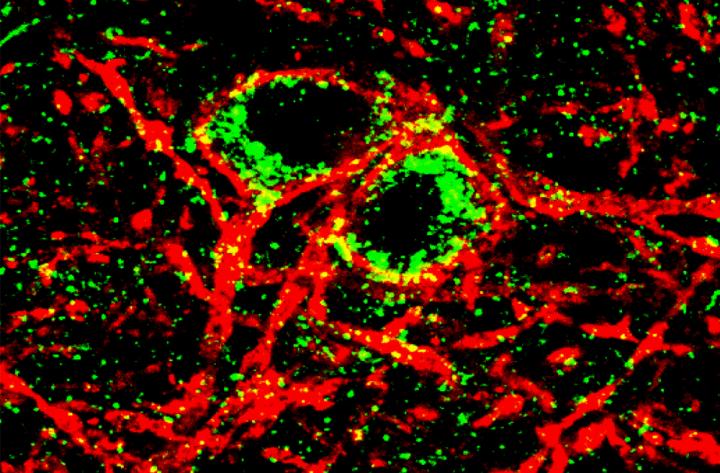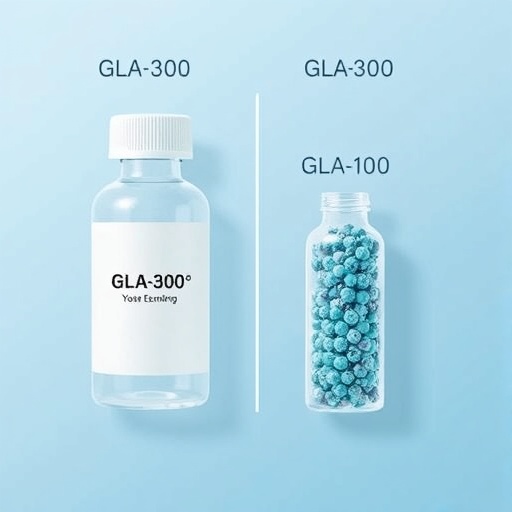
Credit: John Dani, Perelman School of Medicine, University of Pennsylvania; Cell Reports
PHILADELPHIA – Rats that were dosed with nicotine during their adolescence grew up to drink more alcohol than those that weren't exposed to nicotine or were only exposed to it during adulthood, found researchers from the Perelman School of Medicine at the University of Pennsylvania. Exposure to nicotine at a young age changes the neuronal circuitry in the brain's reward pathways, according to a study in Cell Reports this week led by John Dani, PhD, chair of Neuroscience.
"This work on adolescent rats is particularly important because in recent years nicotine vaping with electronic cigarettes has increased among high school and middle school students," Dani said. More than twice as many students report using e-cigs compared to regular cigarettes. Studies show that adolescent use of e-cigs is associated with a greater intention to use regular cigarettes and a much greater likelihood of progressing to regular cigarette smoking, according to a recent national survey.
Adolescent smoking is associated with an increased risk of problem alcohol drinking later in life, but the biological basis for this vulnerability is unknown. The researchers administered nicotine via daily injections to the animals during adolescence or adulthood, then measured alcohol self-administration after a delay, enabling the adolescent rats to reach adulthood. The rats exposed to adolescent nicotine pushed a lever to obtain a slightly sweetened alcohol drink more often for a greater daily intake of ethanol compared to rats that did not experience nicotine or rats or that only experienced nicotine during adulthood.
The researchers found that adolescent, but not adult, nicotine exposure altered the function of the normally inhibitory midbrain circuitry mediated by the neurotransmitter, GABA. Specific GABA signals that were normally inhibitory in response to alcohol began to shift toward excitatory. By altering the midbrain "reward-mediating" circuitry of the brain, this shift in alcohol-induced GABA signaling led to a long-lasting enhancement of alcohol self-administration in rats that were given nicotine at a young age.
The long-term neuronal changes are caused by a decreasing function in a chloride transporter called KCC2 in rat midbrain neurons. Specifically, they found that these neurons less efficiently regulated chloride movement across the outer cell membrane, and this basic function altered alcohol's influence over the midbrain reward center.
###
This research, funded mainly by the National Institute on Drug Abuse (NS021229, DA036572, DA009411), was a team effort at Penn with major contributions by graduate student, Alyse Thomas, and postdoctoral associate, Alexey Ostroumov. Dani's team is now investigating whether the change in midbrain circuitry is the basis for adolescent nicotine acting as a gateway to other drugs of addiction, such as cocaine and morphine.
Penn Medicine is one of the world's leading academic medical centers, dedicated to the related missions of medical education, biomedical research, and excellence in patient care. Penn Medicine consists of the Raymond and Ruth Perelman School of Medicine at the University of Pennsylvania (founded in 1765 as the nation's first medical school) and the University of Pennsylvania Health System, which together form a $7.8 billion enterprise.
The Perelman School of Medicine has been ranked among the top medical schools in the United States for more than 20 years, according to U.S. News & World Report's survey of research-oriented medical schools. The School is consistently among the nation's top recipients of funding from the National Institutes of Health, with $405 million awarded in the 2017 fiscal year.
The University of Pennsylvania Health System's patient care facilities include: The Hospital of the University of Pennsylvania and Penn Presbyterian Medical Center — which are recognized as one of the nation's top "Honor Roll" hospitals by U.S. News & World Report — Chester County Hospital; Lancaster General Health; Penn Medicine Princeton Health; Penn Wissahickon Hospice; and Pennsylvania Hospital – the nation's first hospital, founded in 1751. Additional affiliated inpatient care facilities and services throughout the Philadelphia region include Good Shepherd Penn Partners, a partnership between Good Shepherd Rehabilitation Network and Penn Medicine, and Princeton House Behavioral Health, a leading provider of highly skilled and compassionate behavioral healthcare.
Penn Medicine is committed to improving lives and health through a variety of community-based programs and activities. In fiscal year 2017, Penn Medicine provided $500 million to benefit our community.
Media Contact
Karen Kreeger
[email protected]
215-459-0544
@PennMedNews
http://www.uphs.upenn.edu/news/





